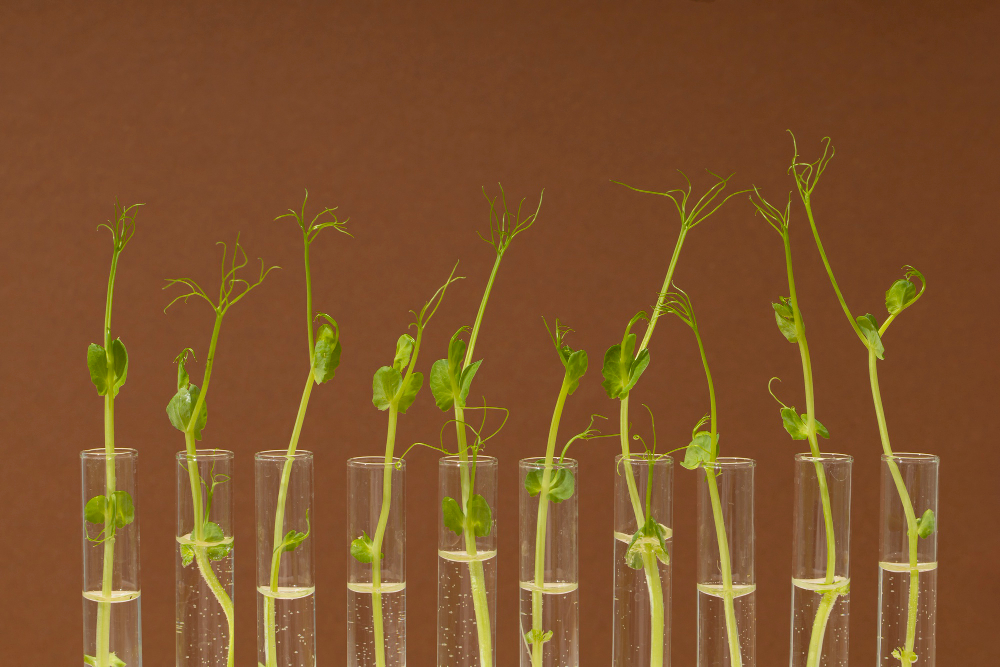In the intricate dance of plant growth, a delicate balance of nutrients is essential for thriving foliage, robust stems, and vibrant blooms. However, like a gardener searching for the missing piece of a puzzle, plants often face limitations when certain nutrients are scarce or unavailable in their environment. These limiting nutrients can vary depending on factors such as soil composition, climate, and plant species. In this guide, we’ll explore some of the key limiting nutrients for plant growth, shedding light on their roles and the consequences of their deficiency.
Nitrogen: The Building Block of Proteins
Nitrogen stands out as one of the most critical nutrients for plant growth, serving as a fundamental building block of proteins, enzymes, and chlorophyll—the green pigment responsible for photosynthesis. In the absence of sufficient nitrogen, plants exhibit stunted growth, yellowing of leaves (a condition known as chlorosis), and reduced yields. Nitrogen deficiency often manifests as pale or yellowing leaves, starting from the older leaves and progressing upwards as the deficiency worsens. To mitigate nitrogen deficiency, gardeners can apply nitrogen-rich fertilizers such as compost, manure, or synthetic nitrogen fertilizers.
Phosphorus: Fueling Energy Transfer
Phosphorus plays a vital role in energy transfer within plants, facilitating processes such as photosynthesis, respiration, and cell division. It also contributes to root development, flowering, and fruiting, making it essential for overall plant growth and productivity. Symptoms of phosphorus deficiency include stunted growth, dark green or purplish leaves, and delayed flowering and fruiting. To address phosphorus deficiency, gardeners can incorporate phosphorus-rich amendments such as bone meal, rock phosphate, or phosphate fertilizers into the soil.
Potassium: Balancing Water Uptake and Photosynthesis
Potassium is crucial for maintaining water balance within plant cells, regulating stomatal function, and facilitating photosynthesis and enzyme activation. It also enhances plant resistance to diseases, pests, and environmental stresses such as drought and frost. Symptoms of potassium deficiency include yellowing or browning of leaf margins, weak stems, and reduced fruit quality. To combat potassium deficiency, gardeners can apply potassium-rich fertilizers such as potassium sulfate, potassium chloride, or wood ash to the soil.
Calcium: Building Strong Cell Walls
Calcium plays a vital role in building strong cell walls, regulating cell division and elongation, and facilitating nutrient uptake and transport within plants. It also helps prevent disorders such as blossom end rot in tomatoes and peppers. Calcium deficiency symptoms include distorted or stunted growth, necrosis (death) of leaf tips and margins, and poor fruit quality. To address calcium deficiency, gardeners can apply calcium-rich soil amendments such as gypsum, lime, or calcium nitrate.
Magnesium: Powering Photosynthesis
Magnesium is an essential component of chlorophyll, the pigment responsible for capturing sunlight and powering photosynthesis in plants. It also plays a crucial role in enzyme activation, energy transfer, and nutrient uptake. Symptoms of magnesium deficiency include interveinal chlorosis (yellowing between leaf veins), leaf curling or cupping, and reduced fruit size and quality. To remedy magnesium deficiency, gardeners can apply magnesium sulfate (Epsom salt) or magnesium-rich fertilizers to the soil.
Sulfur: Synthesizing Proteins and Enzymes
Sulfur is essential for synthesizing proteins, enzymes, and certain vitamins within plants. It also contributes to chlorophyll formation, nitrogen metabolism, and disease resistance. Symptoms of sulfur deficiency include pale green leaves, stunted growth, and delayed flowering and fruiting. To address sulfur deficiency, gardeners can apply sulfur-containing fertilizers such as gypsum, ammonium sulfate, or elemental sulfur to the soil.
Iron: Catalyzing Photosynthesis
Iron is a critical micronutrient for catalyzing photosynthesis, enzyme activation, and chlorophyll synthesis in plants. Symptoms of iron deficiency include interveinal chlorosis (yellowing between leaf veins), stunted growth, and reduced yields. To correct iron deficiency, gardeners can apply iron chelates or iron sulfate to the soil or foliar-spray iron solutions directly onto the leaves.
Zinc: Regulating Growth Hormones
Zinc plays a crucial role in regulating growth hormones, enzyme activity, and carbohydrate metabolism in plants. It also enhances plant resistance to diseases and environmental stresses. Symptoms of zinc deficiency include stunted growth, interveinal chlorosis, and reduced fruit size and quality. To address zinc deficiency, gardeners can apply zinc sulfate or zinc chelates to the soil or foliar-spray zinc solutions directly onto the leaves.
Nurturing Plants to Flourish
In the intricate tapestry of plant growth, each nutrient plays a unique and indispensable role, contributing to the overall health, vigor, and productivity of the plant. By understanding the signs and symptoms of nutrient deficiencies and addressing them promptly with appropriate fertilization practices, gardeners can ensure their plants receive the essential nutrients they need to flourish and thrive. Whether it’s nitrogen for leafy greens, phosphorus for robust blooms, or potassium for fruiting crops, providing a well-balanced diet of nutrients is the key to nurturing healthy, resilient plants that dazzle with their beauty and bounty.
